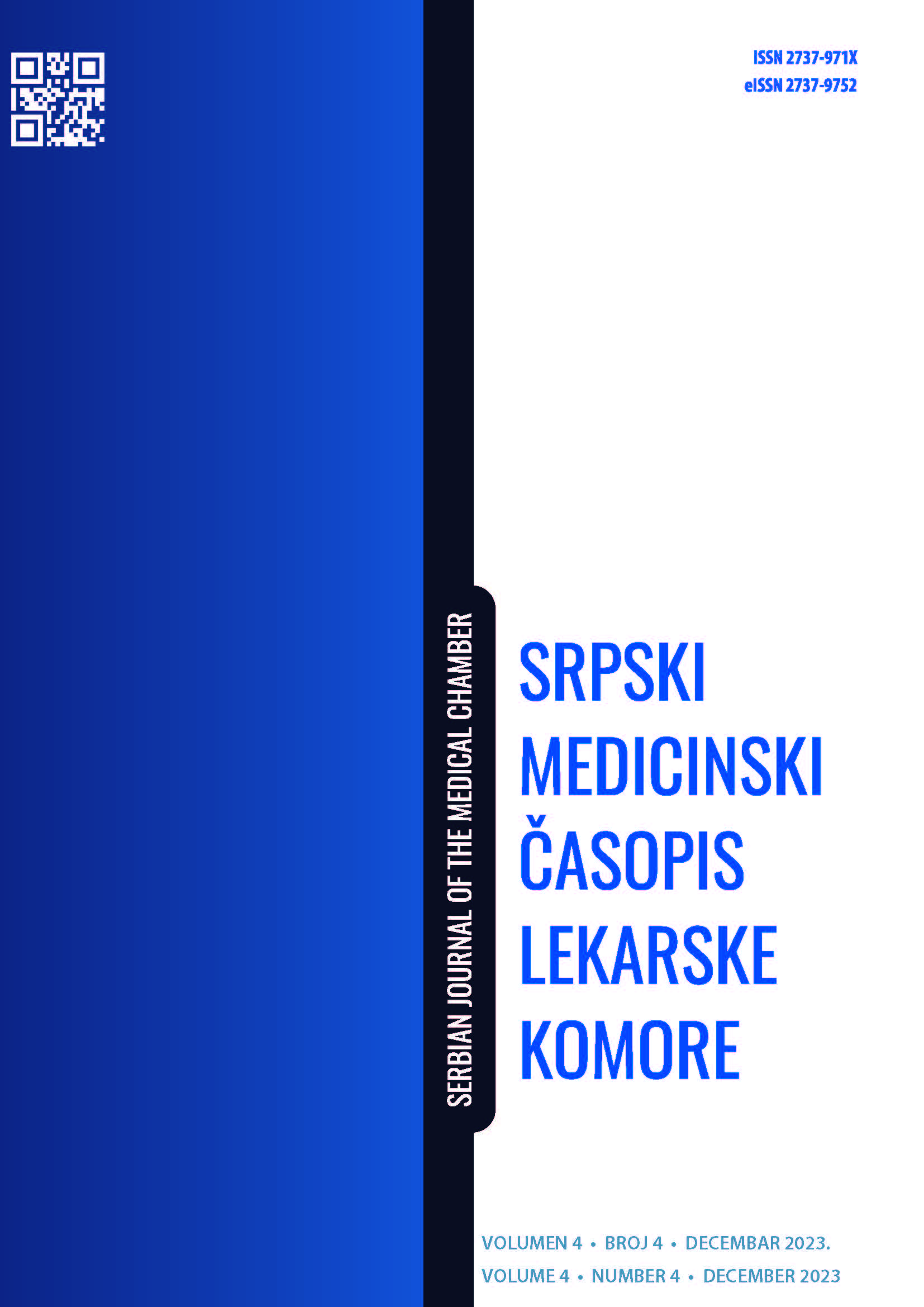HOW AVAILABLE ARE SPECIALIST MEDICAL DOCTORS IN MONTENEGRO?
Abstract
Introduction: Health workers, especially highly skilled and trained staff, with their knowledge, experience, and skills, should enable the implementation of health policy, with the aim of preserving and improving the health of the population. The aim of this study was to determine the availability of medical doctors and specialist medical doctors in Montenegro, by type of specialization, i.e., to determine their age and gender structure, as compared to other countries in the European Region (ER).
Materials and methods: Medical doctors (specialists, residents, and medical doctors without specialist training) represented the unit of observation in this study. In addition to the application of descriptive methods (absolute and relative numbers), indices of change in the number of doctors for the period between 2009 and 2021, indices of change in the age structure of doctors for the period between 2008 and 2021, indices of change in the prevalence of specialist doctors aged above 55 years (55+), by specialty, were calculated, as well as the density of different specialists per 100,000 population. Data related to the public sector, collected and published by the Institute of Public Health of Montenegro, were used.
Results: The total number of doctors (specialists, residents, and medical doctors without specialist training) in Montenegro, in 2021, in the public sector, was by a third higher than in 2009, while the number of specialists increased by a quarter. The increase in the number of specialist medical personnel was significantly higher in hospitals, as compared to outpatient facilities (increase in the number of specialist doctors by 46% and residents by 41%, compared to 23% and 5% in outpatient facilities). In 2021, the highest percentage of specialist staff was in the age group of 55 years and above (about 34%).
Conclusion: The aforementioned statistical series of data, related to specialist doctors, residents, and medical doctors without specialist training, in outpatient and inpatient health care, indicate a significant shortage of these doctors in Montenegro, as compared to most countries in the European Region, as well as an inadequate age structure, especially for certain specialties where careful human resources planning should be applied. Better and more efficient management of human resources should provide for young doctors to begin with specialist training sooner.
References
World Health Organization. Health Systems: Improving Performance: The World Health Report 2000. Geneva: World Health Organization; 2000. [Internet]. Dostupno na: http://apps.who.int/iris/bitstream/10665/42281/1/WHR_2000.pdf.
World Health Organization. Global Strategy on Human Resources for Health: Workforce 2030. Geneva: World Health Organization; 2016. [Internet]. Dostupno na: http://www.who.int/hrh/news/2016/resolution‐en.pdf.
World Health Organization. Regional Office for Europe. (2022). Health and care workforce in Europe: time to act. World Health Organization. Regional Office for Europe. [Internet]. Dostupno na: https://iris.who.int/handle/10665/362379.
European Observatory on Health System and Policies, Enhancing the labour market for health and care workers, Public Debate on the Future Health Priorities of the European Union, Press briefing transcript, 25 September 2023. [Internet]. Dostupno na: https://eurohealthobservatory.who.int/publications/m/enhancing-the-labour-market-for-health-and-care-workers
Small countries initiative: micro case studies on human resources for health. Copenhagen: WHO Regional Office for Europe; 2020. [Internet]. Dostupno na: https://apps.who.int/iris/handle/10665/336233
Ministarstvo zdravlja Crne Gore, Master plan razvoja zdravstva Crne Gore u periodu 2015-2020. [Internet]. Dostupno na: https://www.gov.me/dokumenta/fde2ae2d-2a46-44e2-bf7c-06fdf35f4998
Ministarstvo zdravlja Crne Gore, Strategija razvija zdravstva, 2003. [Internet]. Dostupno na: https://wapi.gov.me/download/e0fc8942-725f-41be-8d13-e850a8611176?version=1.0
Ministarstvo zdravlja Crne Gore, STRATEGIJA RAZVOJA ZDRAVSTVA ZA PERIOD OD 2023-2027. GODINE SA AKCIONIM PLANOM ZA PERIOD 2023-2024. GODINU (nacrt). [Internet]. Dostupno na: https://www.gov.me/dokumenta/2414cd07-7fce-41bd-9df1-11eeaba307e7
Journal of the European Observatory on Health Systems and Policies, Eurohealth: Health systems in crisis: Countering shockwaves and fatigue. [Internet]. Dostupno na: https://iris.who.int/bitstream/handle/10665/372883/Eurohealth-29-1-2023-eng.pdf?sequence=1
Barbazza E, Langins M, Kluge H, Tello J. Health workforce governance: Processes, tools and actors towards a competent workforce for integrated health services delivery. Health Policy. 2015 Dec;119(12):1645-54. doi: 10.1016/j.healthpol.2015.09.009.
Eurostat, Health in the European Union – facts and figures, Healthcare personnel statistics – physicians, Table 1: Physicians, by speciality, 2021. [Internet]. Dostupno na: https://ec.europa.eu/eurostat
World Health Organization, International Labour Organization. The gender pay gap in
the health and care sector: a global analysis in the time of COVID-19. Geneva: World Health Organization; 2022. [Internet]. Dostupno na: (https://apps.who.int/iris/handle/10665/358057).
World Health Organization. (2019). Delivered by women, led by men: a gender and equity analysis of the global health and social workforce. World Health Organization. [Internet]. Dostupno na: https://iris.who.int/handle/10665/311322
Wismar M, Williams G, Zapata T, Azzopardi-Muscat N. The European health workforce: Building a true labour market for health workers. 2022. [Internet]. Dostupno na: https://www.researchgate.net/publication/366272230_The_European_health_workforce_Building_a_true_labour_market_for_health_workers

